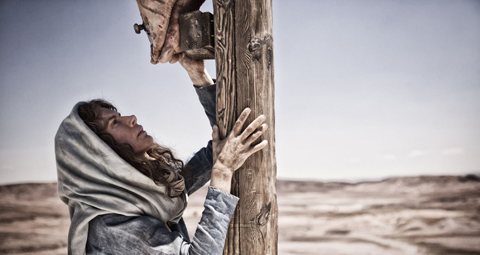July 27 | ![]() 0 COMMENTS
0 COMMENTS ![]() print
print

Being Catholic means sharing in both the joy of life and the grief of death
A LETTER FROM AMERICA explores the example of the Blessed Virgin when dealing with loss — By Brandon McGinley
Openness to life is an essential pillar of the Catholic understanding of marriage. As in so many other areas, the example of the Blessed Mother is a more compelling witness than a thousand perfectly crafted arguments.
“Be it done unto me according to thy word.” Mary’s fiat is the model for every Christian’s docility to God’s will. We are to give ourselves over to Him, body and soul, so that we can become instruments of His grace just as Mary was the vessel in whom grace itself entered the world.
Every marriage that is open to life, and indeed every act of conjugal love within such a marriage, is a little fiat—an embrace of the beautiful truth that God works through us, even in the creation of life itself.
This fiat includes not just the agreement to bring a new life into the world, should He will it, but to nurture the child in the things of the world and, more importantly, the things of Heaven.
What a beautiful vision this is of trust in providence and cooperation with grace!
But we err if we end the catechesis here, as we too often do. There is no life without death. There is no Mater Amabilis without the Mater Dolorosa. There is no fiat without the Pietà.
We as Catholics should know this, not just from studying the life of Mary but from our own experience. The average secular young adult can go months or years without being confronted by death: their friends are likely healthy and childless; only the decline of elderly family members serves as an irregular memento mori.
However, for Catholics who practice openness to life and who are members of networks of families doing the same, death is always nearby.
Openness to life, as Mary reminds us, means openness to death.
Several times a week I receive notifications about worrying prenatal diagnoses or imperilled pregnancies or gravely ill infants. Often the concerned family is a friend of a friend or an internet acquaintance for whom one can do little more than pray—though pray we must.
Sometimes, though, the news is closer to home.
Not long ago, our dear friends lost a child on the cusp of the second trimester, when the risk of miscarriage diminishes to near zero.
They had for more than two months envisioned their family including four children; they wondered if they were to have a boy or a girl, and how their three boys would react either way; they were choosing names and godparents and potential Baptism dates. Blood. Fear. Heartbeat? No. Tears.
A few days after the quiet ultrasound we had them over for an informal dinner. The baby was still inside her; she would deliver the body that night. The husband observed that his wife had become a living icon of the Pietà, carrying the body of her beloved child. If I didn’t cry, I should have.
It all sounds a bit overwhelming, but in the moment it felt normal and natural. We know others who have suffered the same kind of loss, and we know that someday, in all likelihood, we will, too.
One of the immeasurable blessings of being part of a community that is open to life is becoming intimately familiar with the variety of biological and emotional and spiritual experiences that make human life—and death—what it is.
I kept thinking back to the moment when the father told me they were expecting, and the embrace we shared. I also had been envisioning this child’s future—watching him or her grow up and play and probably quarrel with my own children.
The loss of a child is first and foremost a loss for a family, but it is also a loss shared by the wider community; spreading the grief both expands its scope and, God-willing, makes it easier to bear.
One of the biggest mistakes we make in talking about the Church’s teaching about openness to life is sequestering the duty to the nuclear family.
There is a kind of cruelty in this, yoking all the challenges and pains and anxieties that come with human life and death to two people and two people alone.
The teaching implies the necessity of integrated Catholic communities who share the joys and the sufferings that come with simply being human.
Life and death are meant to be shared. The Blessed Virgin shared her son with and for us. Let us look to her example in building our own lives.











